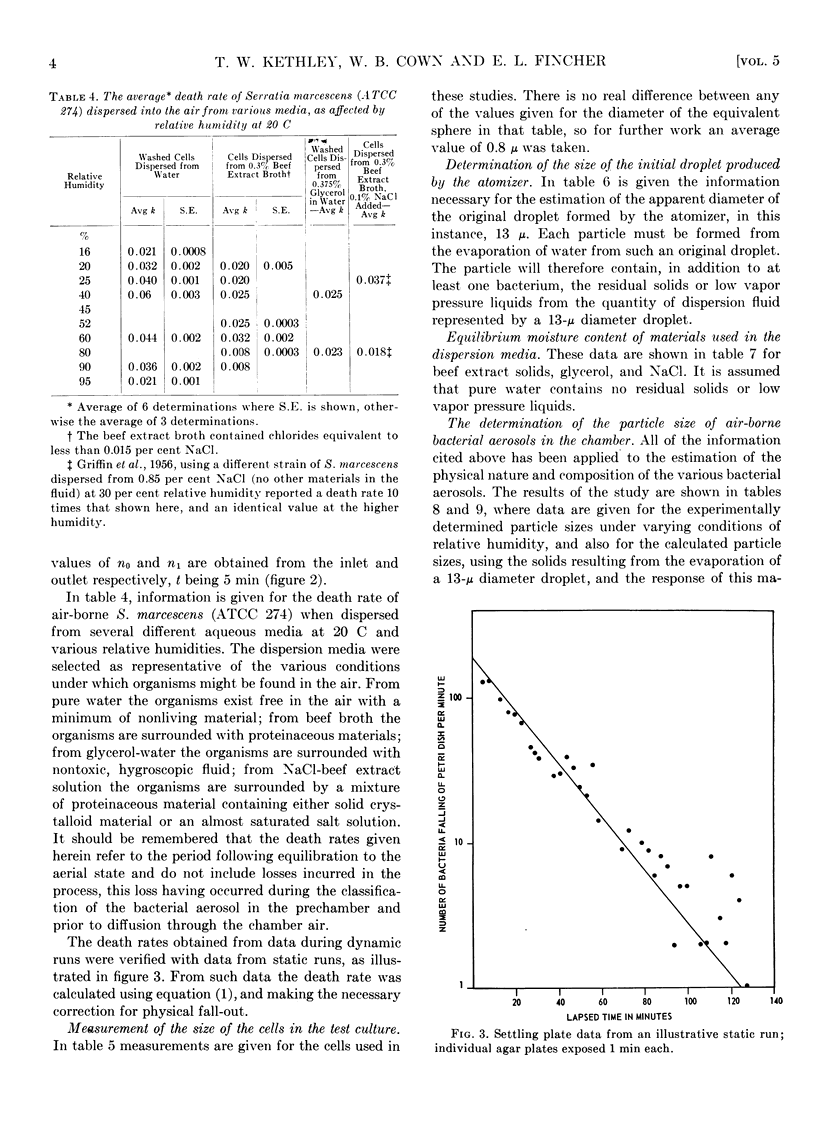Full text
PDF







Selected References
These references are in PubMed. This may not be the complete list of references from this article.
- COWN W. B., FINCHER E. L., KETHLEY T. W. A system for the evaluation of aerial disinfectants. Appl Microbiol. 1956 Sep;4(5):237–243. doi: 10.1128/am.4.5.237-243.1956. [DOI] [PMC free article] [PubMed] [Google Scholar]
- DRUETT H. A., MAY K. R. A wind tunnel for the study of airborne infections. J Hyg (Lond) 1952 Mar;50(1):69–81. doi: 10.1017/s0022172400019434. [DOI] [PMC free article] [PubMed] [Google Scholar]
- FERRY R. M., MAPLE T. G. Studies of the loss of viability of stored bacterial aerosols. I. Micrococcus candidus. J Infect Dis. 1954 Sep-Oct;95(2):142–159. doi: 10.1093/infdis/95.2.142. [DOI] [PubMed] [Google Scholar]
- GRIFFIN C. W., KANTZES H. L., LUDFORD P. M., PELCZAR M. J., Jr Studies of aerosols with simple cloud-chamber technic. I. The evaluation of a technic for the rapid and convenient determination of the survival of airborne microorganisms. Appl Microbiol. 1956 Jan;4(1):17–20. doi: 10.1128/am.4.1.17-20.1956. [DOI] [PMC free article] [PubMed] [Google Scholar]
- HENDERSON D. W. An apparatus for the study of airborne infection. J Hyg (Lond) 1952 Mar;50(1):53–68. doi: 10.1017/s0022172400019422. [DOI] [PMC free article] [PubMed] [Google Scholar]
- KAYE S. The sterilizing action of gaseous ethylene oxide; the effect of ethylene oxide and related compounds upon bacterial aerosols. Am J Hyg. 1949 Nov;50(3):289–295. doi: 10.1093/oxfordjournals.aje.a119361. [DOI] [PubMed] [Google Scholar]
- LEIF W. R., KRUEGER A. P. Studies on the experimental epidemiology of respiratory infections. I. An apparatus for the quantitative study of air-borne respiratory pathogens. J Infect Dis. 1950 Sep-Oct;87(2):103–116. doi: 10.1093/infdis/87.2.103. [DOI] [PubMed] [Google Scholar]
- Leavitt F. W., Kaye S. Temperature Control in the Measurement of Particle Volumes by the Isopiestic Method. Science. 1956 May 25;123(3204):934–935. doi: 10.1126/science.123.3204.934-a. [DOI] [PubMed] [Google Scholar]
- MACKAY I. Hexylresorcinol as an aerial disinfectant. J Hyg (Lond) 1952 Mar;50(1):82–96. doi: 10.1017/s0022172400019446. [DOI] [PMC free article] [PubMed] [Google Scholar]
- ORR C., Jr, GORDON M. T. The density and size of air-borne Serratia marcescens. J Bacteriol. 1956 Mar;71(3):315–317. doi: 10.1128/jb.71.3.315-317.1956. [DOI] [PMC free article] [PubMed] [Google Scholar]
- Rentschler H. C., Nagy R. Bactericidal Action of Ultraviolet Radiation on Air-Borne Organisms. J Bacteriol. 1942 Jul;44(1):85–94. doi: 10.1128/jb.44.1.85-94.1942. [DOI] [PMC free article] [PubMed] [Google Scholar]
- URBAN E. C. The chambers for use in exposing laboratory animals to the inhalation of aerosols. AMA Arch Ind Hyg Occup Med. 1954 Jan;9(1):62–68. [PubMed] [Google Scholar]
- WALDHAM D. G., HALVORSON H. O. Studies on the relationship between equilibrium vapor pressure and moisture content of bacterial endospores. Appl Microbiol. 1954 Nov;2(6):333–338. doi: 10.1128/am.2.6.333-338.1954. [DOI] [PMC free article] [PubMed] [Google Scholar]
- WEISS E., SEGELER J. C. A cloud chamber for the uniform air-borne inoculation of mice. J Infect Dis. 1952 Jan-Feb;90(1):13–20. doi: 10.1093/infdis/90.1.13. [DOI] [PubMed] [Google Scholar]


